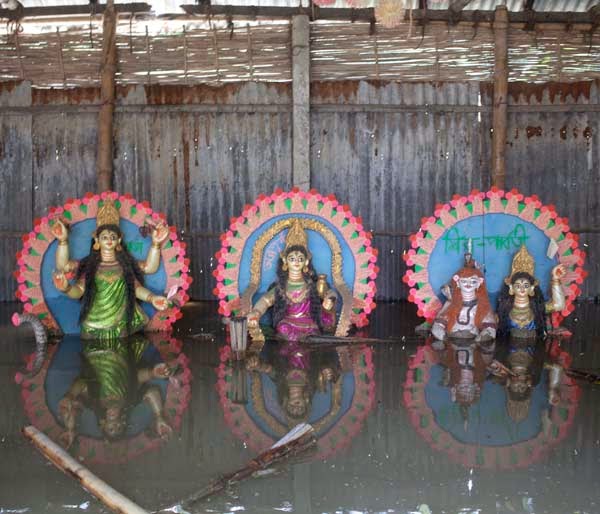In May 2014, I wrote this short text for the photography quarterly PIX. The theme of the issue was Habitat (downloadable for view here) and the images my text accompanied were from a superb series called Life on Water, by the young Bangladeshi photographer, Rasel Chowdhury. My text as well as some of Chowdhury's exceptional images, below.
“It was over twenty years since the river had flooded the island, and at that time no-one had lived there.” So went one of the opening lines of Ruskin Bond's remarkable children's classic, Angry River. As a city child, the book was my first inkling that a river wasn't only what lay below the Howrah Bridge: flat, grey, unmoving. A river could be alive. It could be angry. And it could be beautiful.
 |
| Photo: Rasel Chowdhury |
Looking at Rasel Chowdhury's images of
the 2012 floods in Bangladesh's Kurigram District, it was Angry
River I remembered. I thought of
Sita, the little girl-woman through whose eyes we watch the river's
terrifying transformation. In the morning, the water is muddy instead
of green, and her favourite rock has disappeared, “the one on which
she often sat dangling her feet... watching the little Chilwa fish
swim by.” By noon, the water has oozed its way into the hut, and a
horrified Sita climbs into the big peepul tree. But as the water
rages around it, “a dragon on the rampage”, the old tree gives up
its grip on the earth.
Sita, clinging to
the tree, is set afloat on the swirling water. But what is remarkable
is that Bond chooses to evoke awe rather than plain fear. His river
is an elemental force against which it would be foolish to struggle,
but it is also the giver of life. It is the river that gives Sita's
grandfather his fish, and the silt it leaves in its wake is where the
villagers grow their vegetables – and Sita her mango tree.
 |
| Photo: Rasel Chowdhury |
 |
| Photo: Rasel Chowdhury |
A horse stands still, and waits. There is a sense that this is temporary. Books wait expectantly in the flooded schoolroom. But what will be, will be. Even the gods seem resigned to an early immersion.
 |
| Photo: Rasel Chowdhury |
“We
are part of the river,” says the boy who rescues Sita. “We cannot
live without it.”
Published in Pix Quarterly, Volume 10, May 2014.
No comments:
Post a Comment